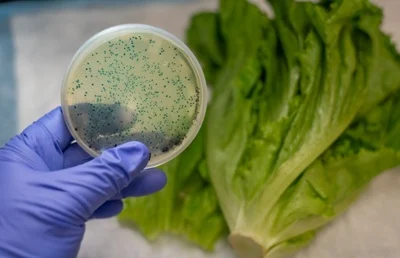(This article originally appeared in Food Logistics Magazine)
The stakes are high
From ensuring the health and safety of customers to protecting your brand reputation, there is a lot at stake when food products are found to have issues in your supply chain. Being proactive rather than reactionary is absolutely critical in mitigating risk. Companies must be diligent in continually testing their products and monitoring trends in test results, product incidents, and complaints. When issues arise, brands must move quickly to conduct thorough investigations, take corrective action and, when necessary, execute a product withdrawal or recall efficiently.
This isn’t always simple though. There are often complex business and distribution channel relationships, timing, financial, and logistical requirements to navigate. A lack of visibility or poor data can also present hurdles. It is for these reasons that food recalls are so costly.
In fact, a survey by the Food Marketing Institute (FMI) and the Grocery Manufacturers Association (GMA) found the average cost to be $10M as companies face business interruption, lost sales, damaged brand reputation, litigation, settlements, and fines. A separate GMA survey found 5% of companies incurring over $100M in direct and indirect costs.
Prevention is key
The biggest impact to protecting your customers, reducing costs, and limiting damage to your brand is preventing the issues from happening in the first place. Understanding the leading causes of issues and recalls (pathogens, undeclared allergens, labeling issues, physical contaminants, etc.) should inform your quality and food safety programs. Designing quality and food safety into the products you source or create is paramount. Being diligent with preventative controls and finished product standards, ingredient sourcing, and the suppliers you work with is critical. Further, brands should take a risk-based approach to product testing, with frequent on-site inspections and product evaluations. All of these efforts contribute to preventing food with issues from entering the supply chain.
But issues are inevitable, so now what?
Even with the most stringent quality control procedures in place, product withdrawals and recalls can and do happen. In 2018 there were 684 food recalls (559 FDA + 125 USDA), not to mention the thousands of voluntary product withdrawals that took place.
The reality is that businesses need to be prepared for these events and be able to act quickly and effectively to protect customers and brand reputation, and limit costs and disruption to the business. This need may become even more critical during times when disasters have occurred or pandemics, such as COVID-19, are present. While there is no evidence of food or food packaging being associated with transmission of COVID-19, we are in a time where the food supply chain is being stressed, which opens the door for a potential increase in general food safety risk.
Every food company must have a product recall plan -- and a well-formed plan can make all the difference when a product safety issue arises. It can aid in expediting resolution by assigning necessary duties, centralizing contact information, and outlining responsibilities for key individuals from the company. Additionally, it should include prepared templates for communications to regulatory agencies, the distribution chain, and consumers when appropriate.
Manually managing all of these moving parts can be stressful with an increased chance for human errors that can have serious consequences. But by incorporating new tools and automation, you can streamline your product quality and complaint monitoring, investigations, supply chain communications, and response management. Technology can also greatly simplify measuring effectiveness and provide automated reporting and record keeping.
Leading food focused businesses (restaurants, grocery, convenience stores, and food manufacturers) are using technology and automation to manage their product withdrawal and recalls across these six steps:
1. Automated Monitoring of Product Testing, Incidents, and Complaints
In addition to the preventative measures outlined above, brands need to carefully monitor products once they enter the supply chain. Doing so can give you a leading indicator of issues and allow you to take proactive action. Given the number of channels that exist, as well as product complexity, this can be a challenge for some. However, many companies are using automated monitoring and trend detection for specific types of products and/or suppliers. Identifying non-compliances during lab tests and product inspections, or products that have an out-of-threshold number of complaints, can help you determine when to transition to an investigation with further response management if needed. The entire process can be automated and run seamlessly to monitor complaint receipt and evaluation, and proactively alert quality assurance teams of potential issues.
2. End-to-End Event Management from Investigation to Resolution
Before an event occurs, it’s helpful and necessary to create standard operating procedures (SOPs) and communication templates for various situations (including product hold/release, withdrawal, and class I,II, III recalls).
Software specifically designed to handle food recalls can “operationalize” your plan through automated workflows, communication templates, response forms, and notifications to ensure nothing gets overlooked.
Software can also help prepare your team and supply chain for the real thing by conducting mock recalls throughout the year. It’s helpful to test your preparedness using mock events to identify gaps in information or in your process. The recall plan can then be modified as needed, with the mock event results documented in a central system so it can be reviewed again down the road.
3. Identify the Potentially Impacted Parties
Building a distribution list of potentially impacted parties to communicate a food withdrawal or food recall to can be time a time-consuming challenge for certain companies. Manufacturers typically have ERP systems and can cross reference lot codes with invoices and contact buyers. If the product is further into the supply chain if can be harder.
Restaurant and grocery chains needing to pull product and, in some cases, notify the public, are more challenged to create these distribution lists -- unless you are Costco and have members! Casting a wider net is wise from a risk management standpoint but can result in a lot more product being destroyed than necessary.
Software that helps you understand sources of ingredients, the ingredients used in your products, and the supplier facilities you get your products from, can give you a good starting point. Being able to identify supplier-to-distributor, and distributor-to-retail location relationships and flow of goods is the key. This will enable your team to quickly identify and engage with the appropriate parties if a withdrawal or recall is needed. Having all this information in a single source plus contacts, emails, and phone numbers, makes building these distribution lists much faster.
4. Coordinate and Automate Communication and Collect Responses
Once the decision is made to withdraw or recall a product, it’s vital to quickly notify potentially impacted parties to take action. You’ll need to provide clear instructions on how to identify the product, with steps on how to return or dispose of the affected product. For those with stock, collecting the amount of product found will be necessary for calculating your effectiveness.
You can use automated email, phone and text messaging platforms to communicate with impacted parties for all these steps, including product identification and instructions for disposition, how to report the amount of stock recovered, and how to document the steps taken and by whom. Many of these messages can be automated with triggers and follow-up communications sent periodically. As well, the credit or replacement process for recalled or withdrawn products can also be automated. Consider employee communications too, to ensure your leadership, field management, and front line workers are kept in the loop and know the status of the product as it applies to their locations.
5. Real-time Event Monitoring
As an event unfolds, the situation can change quickly. Often your next-step response will be dependent upon the outcomes and actions of others (or non-action!), so it’s critical to have the most up-to-date information easily accessible. Software specifically designed to handle food recalls allows you to track emails, texts, and phone messages delivered, the number of emails opened, acknowledgment of receipt of your communications, and response forms received to date. Additionally, these tools can help you track the amount of product accounted for. All of this can be automatically recorded to determine the number of parties who’ve responded, their time-to-respond, and what parties need additional focus to ensure the recall is being carried out efficiently.
6. Detailed Record Keeping
With everything going on during a product recall or withdrawal, keeping detailed records may feel like an impossibility, but should be at the top of your list. Following your plan and keeping a timeline of actions will help your crisis management team stay focused and inform other stakeholders of status and progress. Keeping any documentation on related product incidents, your team’s risk evaluation, internal notes, documents, emails, communications, and actions taken will be important post mortem. Keep everything organized in a central location. With all your responses collected, you can determine your recall “effectiveness.” Having all your records centralized makes your life a lot easier when debriefing with the C-Suite or during an FDA recall audit check (RAC).
The sourcing and delivery of safe, high-quality food products is complex and risky, and the price of failure can be high. No business wants to plan for a food recall, but you need to be prepared. Every minute counts, so it’s vital to have instant access to the right monitoring, investigative tools, information, and systems to take action and quickly communicate with supply chain partners, retail locations, the public, and key stakeholders. Software specifically designed to handle food recalls can make all the difference in your ability to protect your customers and your brand reputation – it can help you manage the process from initial investigation to resolution and streamline the reporting, resolution, and credit or replacement process from days to hours.




